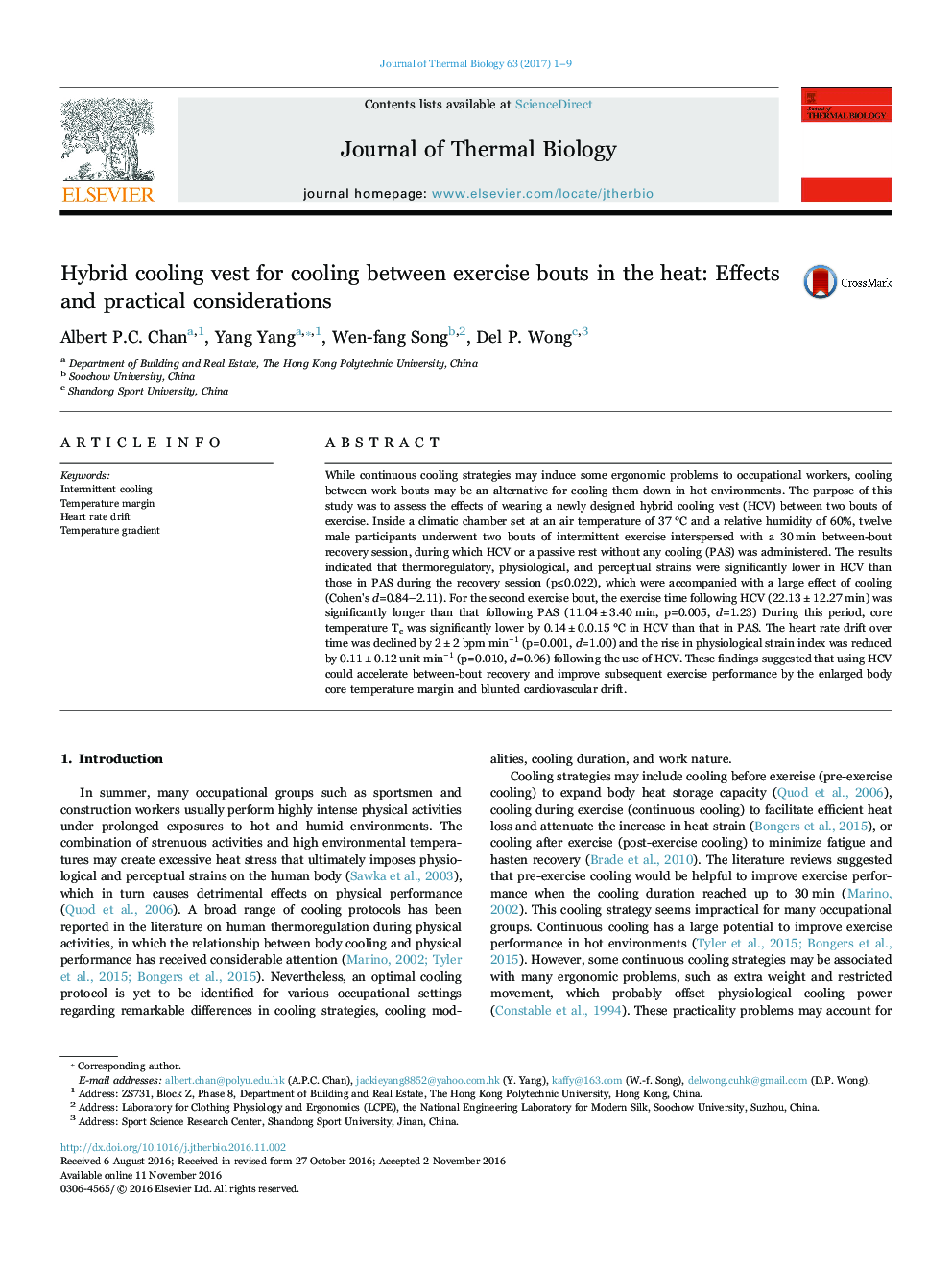| کد مقاله | کد نشریه | سال انتشار | مقاله انگلیسی | نسخه تمام متن |
|---|---|---|---|---|
| 5593528 | 1571084 | 2017 | 9 صفحه PDF | دانلود رایگان |
- The effects of a hybrid cooling vest using between exercise bouts were assessed.
- Between-bout recovery was accelerated with the use of cooling vest.
- Subsequent exercise performance was improved after using the vest.
- The enlarged body core temperature margin by the vest might enhance performance.
- The blunted cardiovascular drift by the vest might also improve performance.
While continuous cooling strategies may induce some ergonomic problems to occupational workers, cooling between work bouts may be an alternative for cooling them down in hot environments. The purpose of this study was to assess the effects of wearing a newly designed hybrid cooling vest (HCV) between two bouts of exercise. Inside a climatic chamber set at an air temperature of 37 °C and a relative humidity of 60%, twelve male participants underwent two bouts of intermittent exercise interspersed with a 30 min between-bout recovery session, during which HCV or a passive rest without any cooling (PAS) was administered. The results indicated that thermoregulatory, physiological, and perceptual strains were significantly lower in HCV than those in PAS during the recovery session (pâ¤0.022), which were accompanied with a large effect of cooling (Cohen's d=0.84-2.11). For the second exercise bout, the exercise time following HCV (22.13±12.27 min) was significantly longer than that following PAS (11.04±3.40 min, p=0.005, d=1.23) During this period, core temperature Tc was significantly lower by 0.14±0.0.15 °C in HCV than that in PAS. The heart rate drift over time was declined by 2±2 bpm minâ1 (p=0.001, d=1.00) and the rise in physiological strain index was reduced by 0.11±0.12 unit minâ1 (p=0.010, d=0.96) following the use of HCV. These findings suggested that using HCV could accelerate between-bout recovery and improve subsequent exercise performance by the enlarged body core temperature margin and blunted cardiovascular drift.
Journal: Journal of Thermal Biology - Volume 63, January 2017, Pages 1-9
